Chapter 14: RNA <
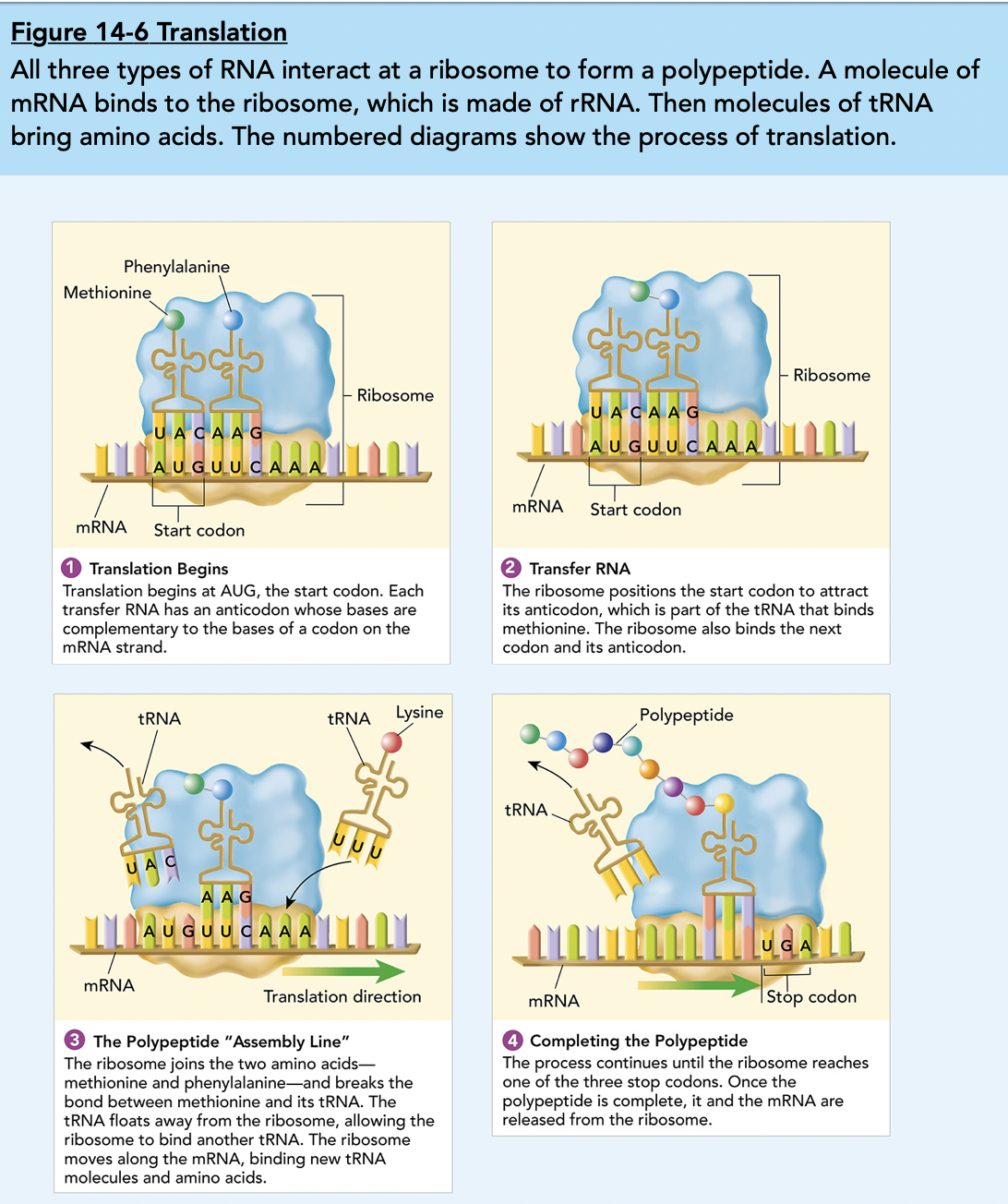
14.1 RNA
RNA is a nucleic acid made of nucleotides, containing a 5-carbon sugar, a phosphate group, and a nitrogenous base.
Differences between RNA and DNA
RNA uses sugar ribose instead of deoxyribose
It contains uracil in place of thymine
Single-Stranded
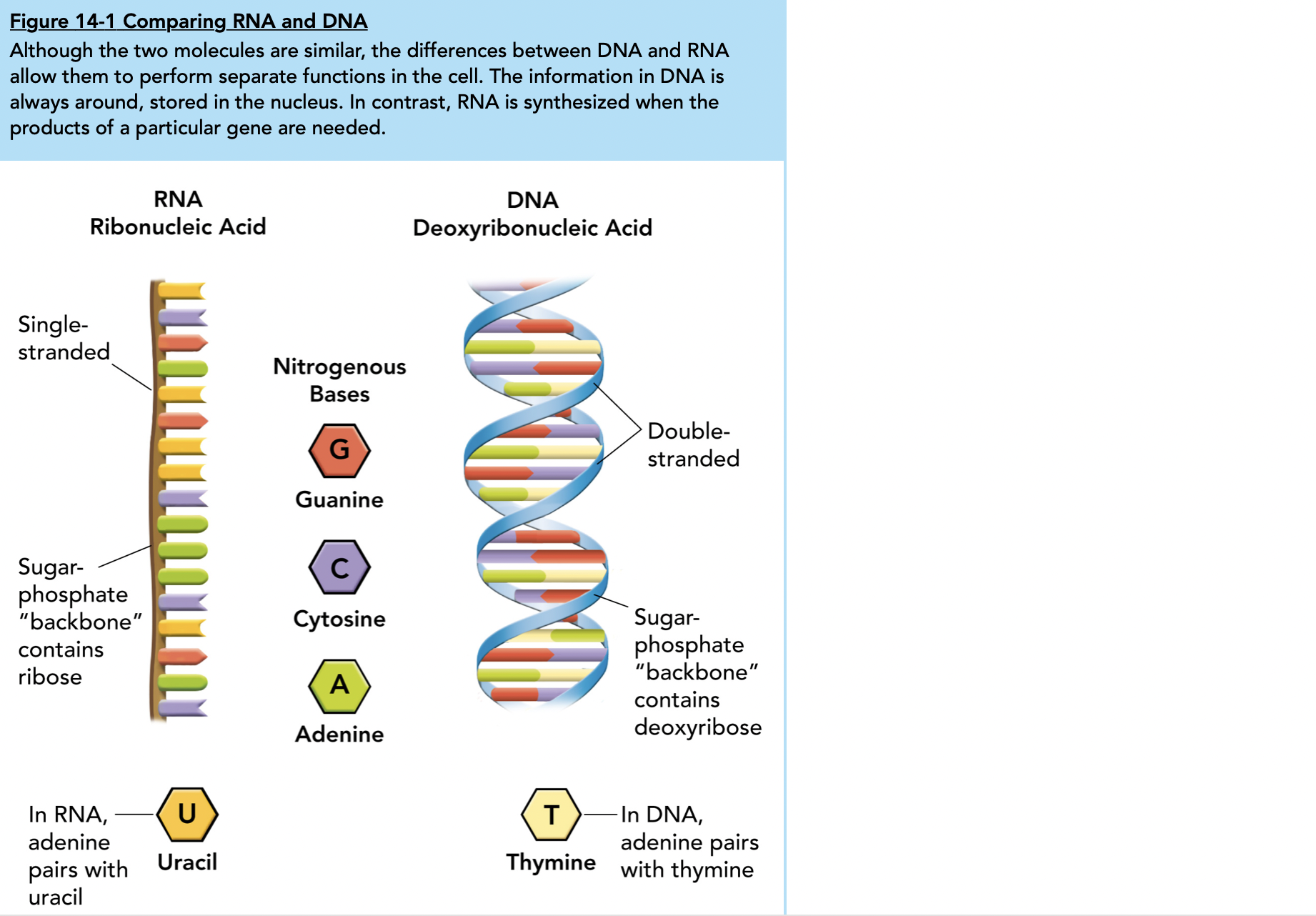
The first for protein synthesis is transcription, which occurs in the nucleus
Transcription is when RNA is made from DNA(DNA is in the nucleus which is why this process occurs here). The DNA unwinds and one strand is used to make a matching RNA molecule. RNA is made in the 5' to 3' direction with the help of RNA polymerase. Transcription is important for making proteins and gene expression.
RNA polymerase binds to a promoter
DNA strands unwind and separate
RNA polymerase adds complementary RNA nucleotides to the growing RNA strand
RNA polymerase moves along the DNA template strand in a 5' to 3' direction
RNA polymerase reaches the termination sequence and detaches from the DNA template strand
The newly synthesized RNA molecule is released and DNA strands rejoin.
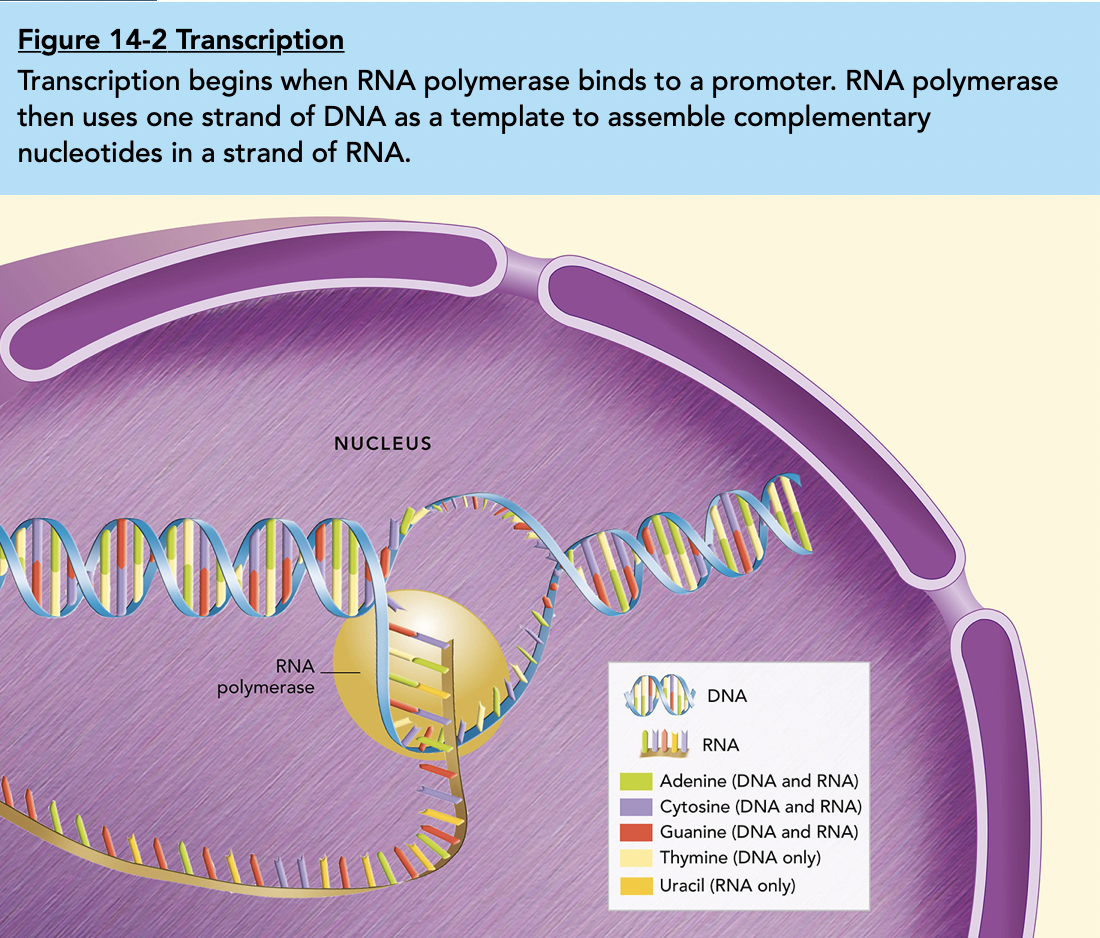
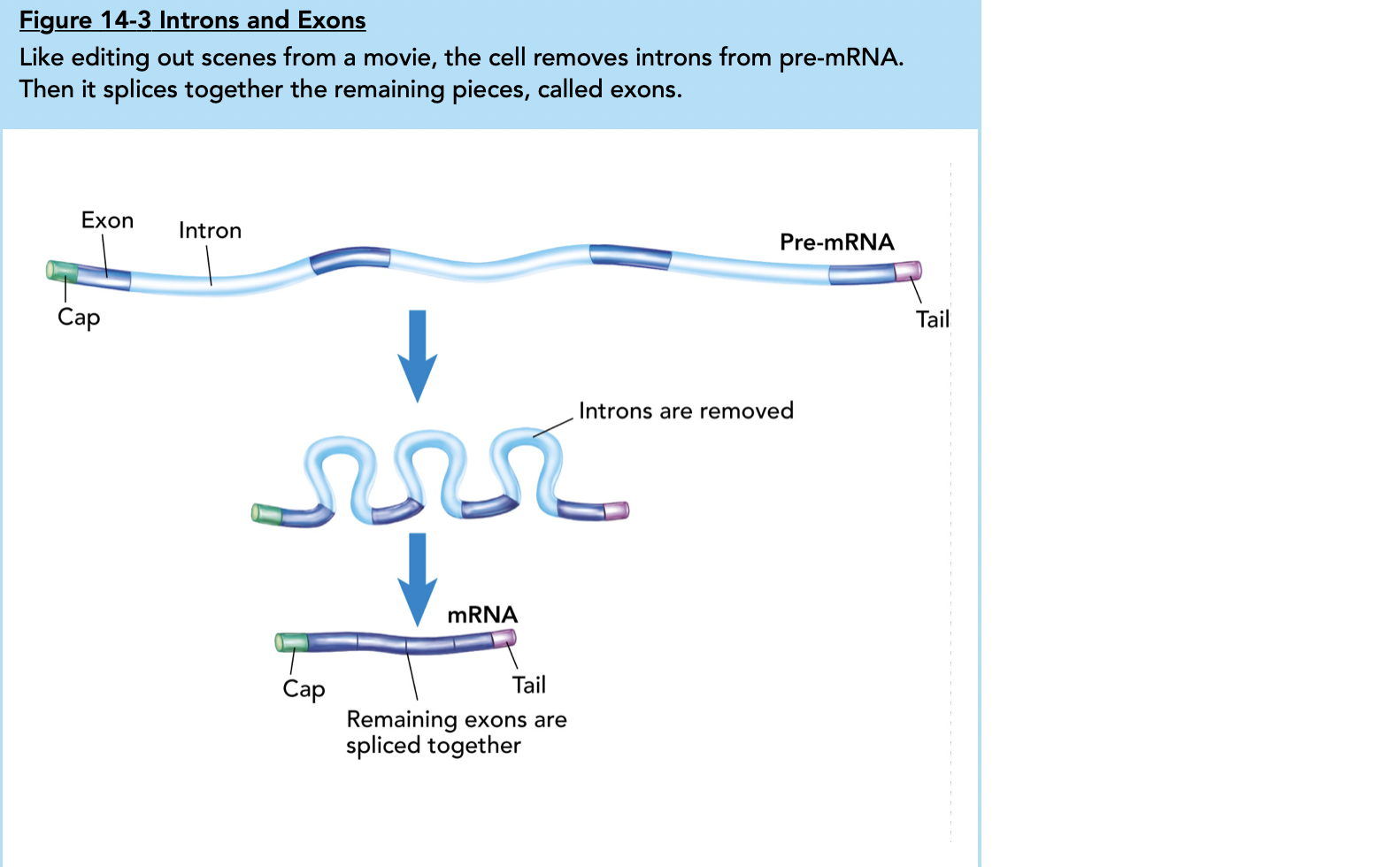
Types of RNA
Messenger RNA (mRNA)
Transfers genetic information from DNA to ribosomes so that the instructions can be put into action
Ribosomal RNA (rRNA)
Combines with proteins in order to form ribosomes
Transfer RNA (tRNA)
transfers amino acids to ribosomes during protein synthesis, based on mRNA messages
Translation (occurs in the cytoplasm, on ribosomes)
1) In this process, mRNA first carries the instructions needed for this process:
The sequence of bases in mRNA acts as a set of instructions that gives the order of amino acids that should be joined to create a polypeptide(Polypeptides can be folded to make a protein).
Next, a ribosome attaches to a mRNA molecule and each codon passes through the ribosome
Around here is “initiation” where the mRNA and tRNA get together
2) tRNA then delivers the amino acids which allow the mRNA's message to be read and translated in the ribosome. <<“elongation”
Each tRNA molecule has three unpaired bases called an anticodon, which is complementary to a codon on mRNA.
there are 3 binding sites for tRNA: aminoacyl (A), peptidyl (P), and exit (E). These are oriented from 5’ to 3’ as E-P-A. So tRNA goes from A site to P, then to E
3) Lastly, rRNA holds the ribosomal proteins in place, so that they can be joined with the amino acids(which a second tRNA brings)
4)The finished polypeptide is then released and goes to do its job in the cell <<“termination”
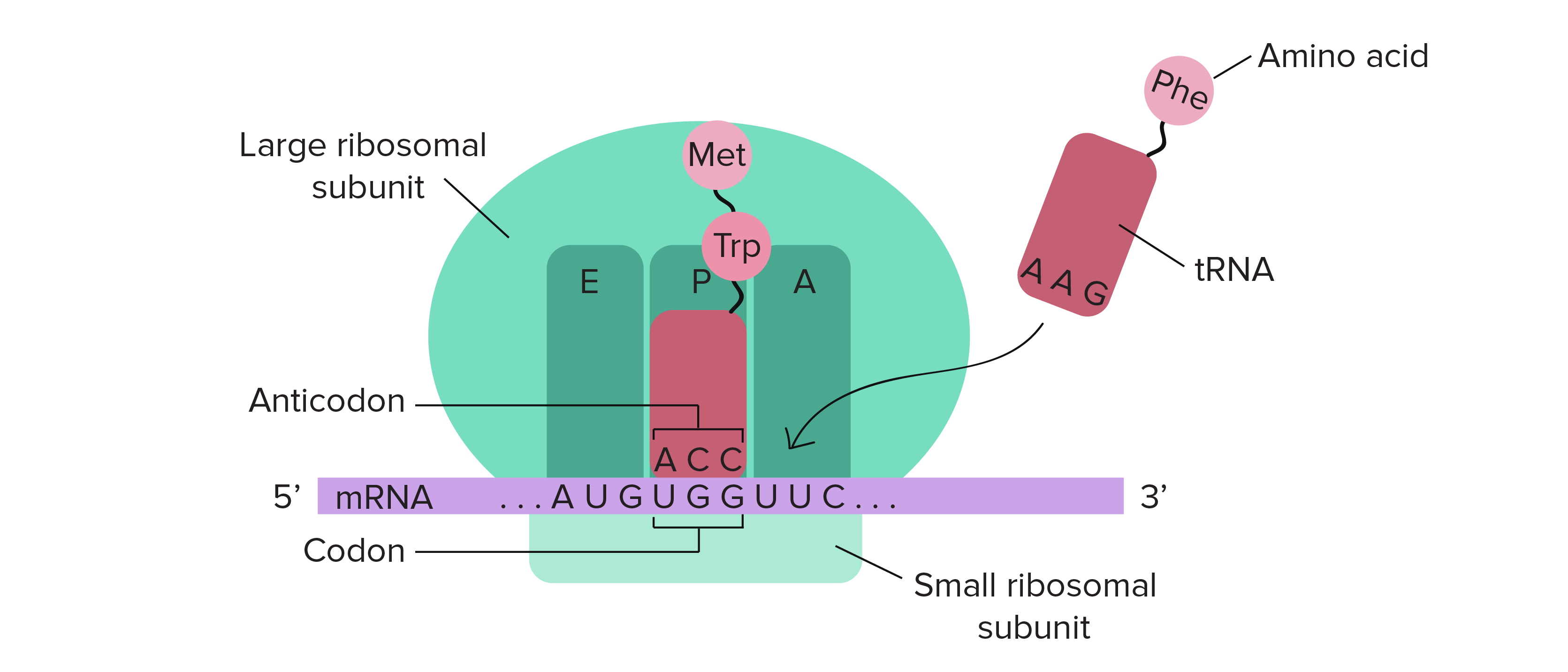
Transcription vs. Translation
Transcription is the process of copying genetic information from DNA to RNA, while translation is the process of decoding the RNA sequence to produce a specific protein. In simpler terms, transcription is like making a copy of a recipe, while translation is like using that recipe to cook a meal.
14.2 Ribosomes and Protein Synthesis
RNA consists of four bases: A, C, G, and U. In a sequence, these are read three at a time (called a codon), because three translates into one of the 20 amino acids.
One amino acid can be translated into multiple codons, or just one. For example, only UGG specifies the amino acid tryptophan, while leucine has multiple codons. The chart below can be used to identify the amino acid each codon correlates with easily
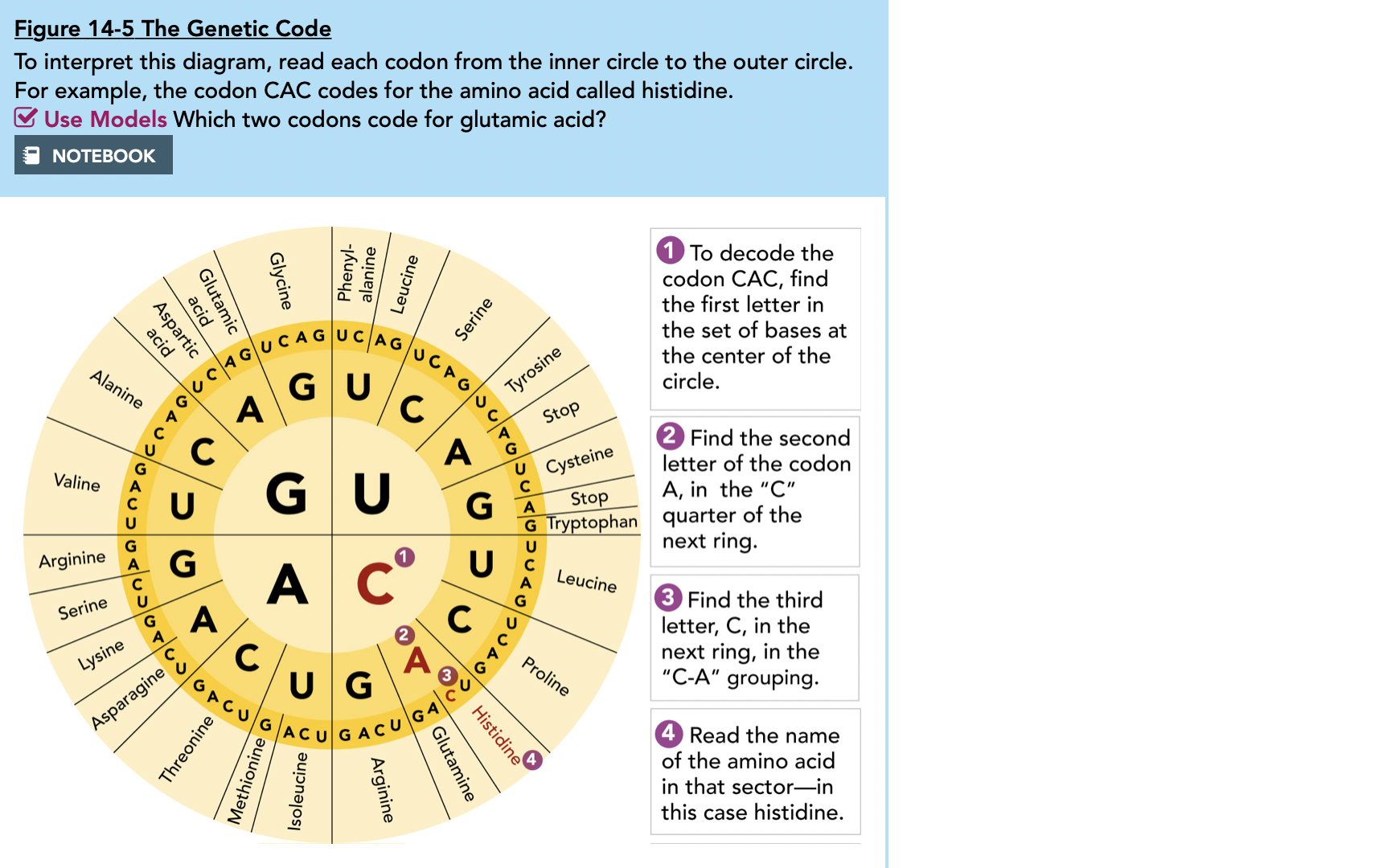
There are also start and stop codons to indicate when the sequence initiates or when it ends. (AUG is a "start" codon in protein synthesis, and there are three "stop" codons.
Anti-codons on tRNA molecules match codons on mRNA during protein synthesis. This ensures the correct amino acid is added to the protein chain.
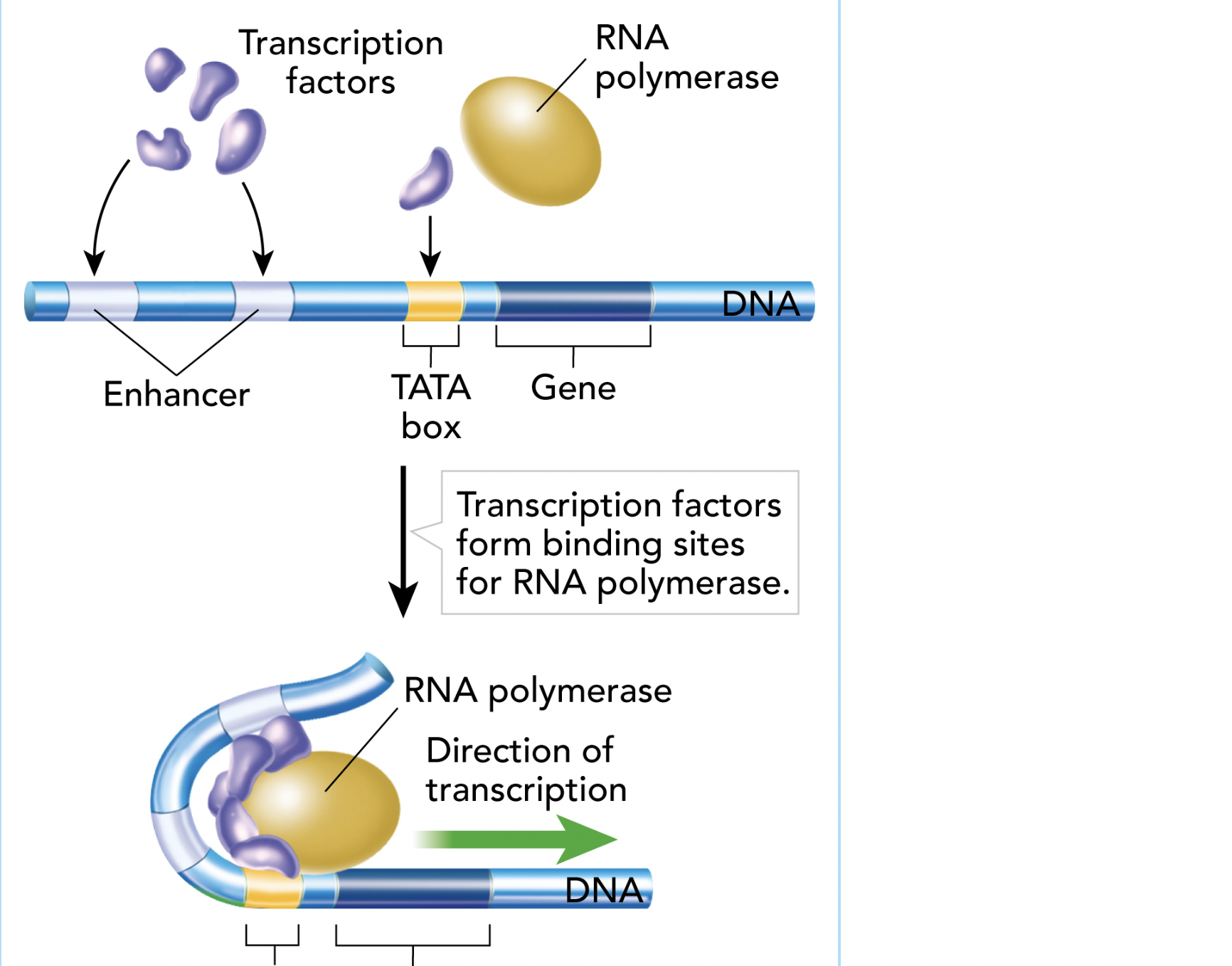
14.3 Gene Replication and Expression
Gene expression, or choosing which genes a cell expresses, is used in organisms to conserve energy and resources. Through this process, bacteria can respond to environmental changes such as the presence/absence of nutrients. DNA binding proteins are able to regulate genes by controlling transcription.
-Gene expression can also be influenced by environmental factors
Operon: A group of genes regulated together (In order for e-coli to be able to break down lactose, three genes must be turned on, this is important because lactose is a food source)
Promoter: the site where RNA can bind to begin transcription
Operator: the site where a repressor can bind to DNA
Prokaryotes-
To switch genes off, repressor proteins attach to the operator region so that polymerase can’t begin transcription.
When genes are switched on, like for example with breaking down lactose, the lactose binds to the repressor, causing it to be released. Transcription can then begin.
The Repressor gene in this diagram might also be known as the Regulator as it is the one that codes for a repressor proteins so be careful
Eukaryotes:
TATA box:
a region of DNA containing the sequence TATATA or TATAAA. This region binds a protein that acts as a marker for the RNA polymerase
Transcription factors:
proteins that bind to DNA and control gene expression and can activate multiple genes at once
Differentiation is the process by which cells become specialized by taking on a specific characteristic
This is a crucial process for the development of all multicellular organisms to function in the right manner and helps organs and tissues to function correctly. There are various components to cell specialization, such as Hox genes which determine the basic body structure of an organism.
Homeotic Genes:
Determines the identity of body parts, if there is a mutation in these genes, one body part may turn into another
Homeobox Genes:
Activates the genes for cell development and differentiation
Hox Genes:
A group of homeotic genes that contain the homeobox DNA sequence
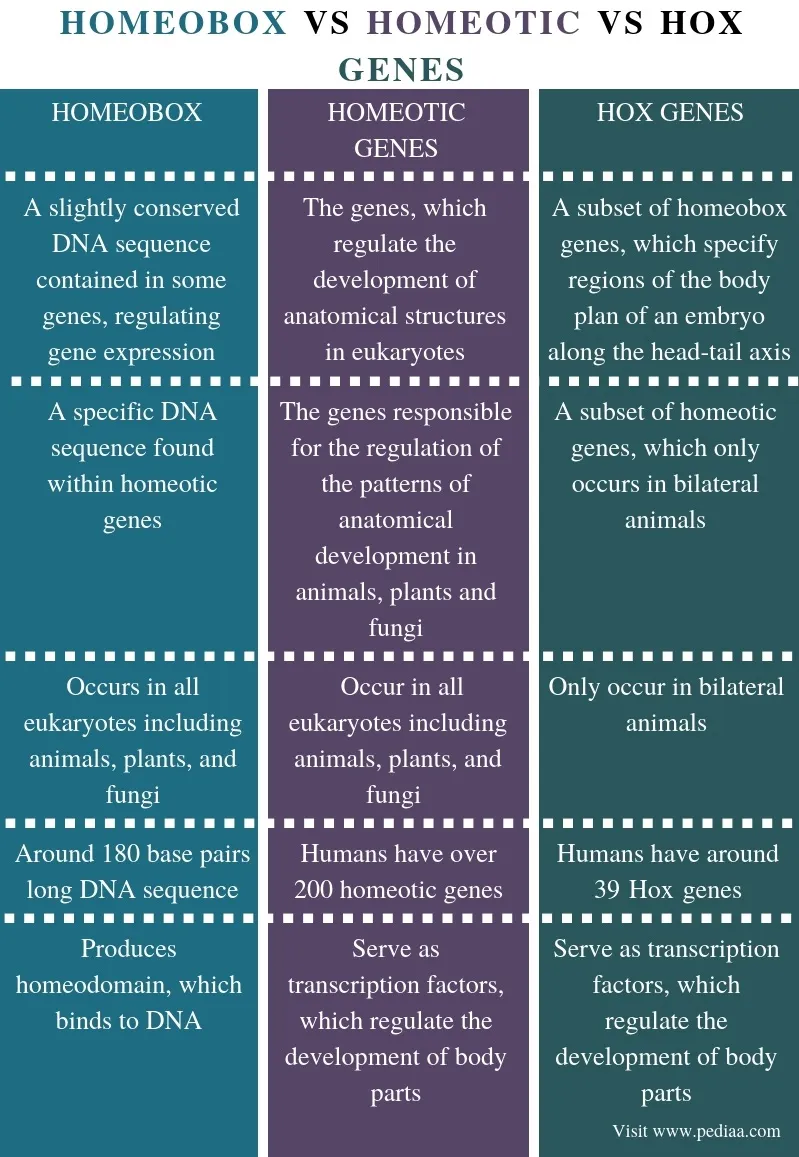
14.4 Mutations
In DNA, the sequence of bases is like instructions, but what happens if something gets messed up at some point, like during replication?
Point mutations
Note: sometimes mutations may be “silent” meaning that the amino acid could result in the same as if the mutation was not there.
Substitution:
A nucleotide is replaced by another in the DNA sequence. This can result in a change in the amino acid sequence of the protein that is encoded by the gene. Depending on the location and nature of the substitution, it can have no effect, a minor effect, or a significant effect on the function of the protein.
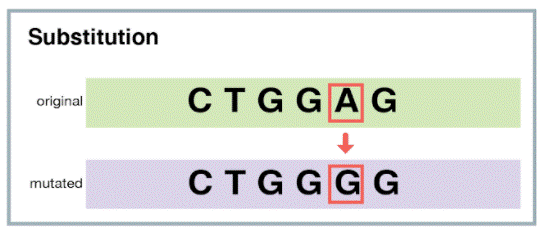
Insertion:
An insertion mutation is a type of genetic mutation where an extra nucleotide is added to the DNA sequence. This can cause a shift in the reading frame of the gene, leading to a completely different amino acid sequence in the resulting protein.

Deletion:
A deletion mutation in biology is a type of genetic mutation where a base is deleted. This can result in a change in the genetic code, leading to altered or non-functional proteins.
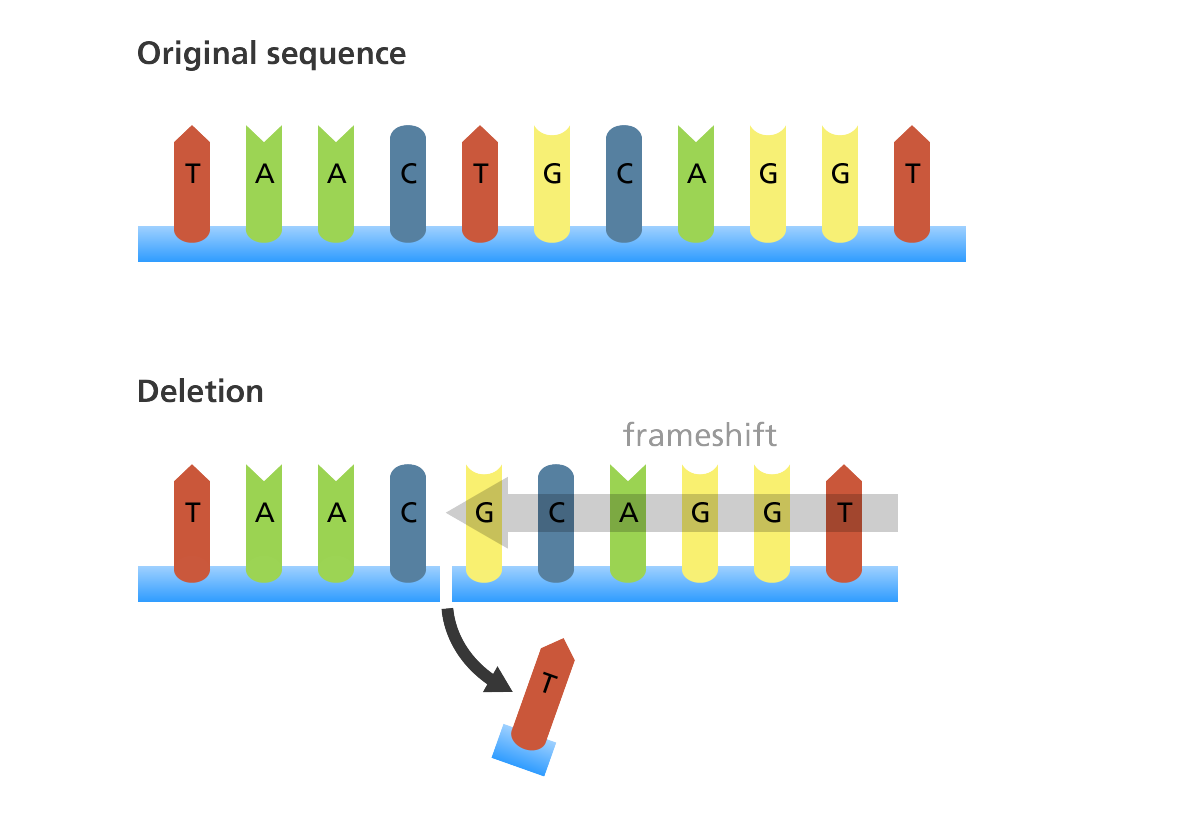
Chromosomal Mutations
Deletion:
Similar to the one in point mutation, but instead the loss of a segment of DNA from a chromosome.
Duplication:
A duplication mutation in biology is a type of genetic mutation where a segment of DNA is duplicated or repeated, resulting in an extra copy of that genetic material.
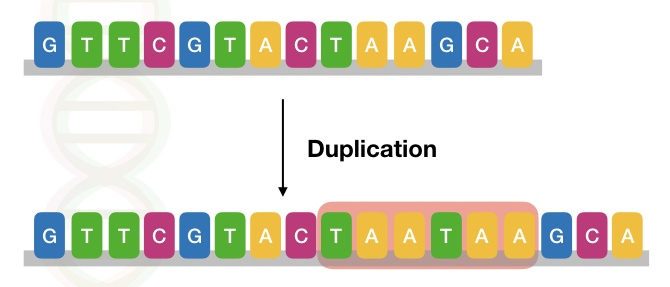
Inversion:
Inversion mutation in biology refers to a type of chromosomal mutation where a segment of the chromosome is reversed end-to-end.
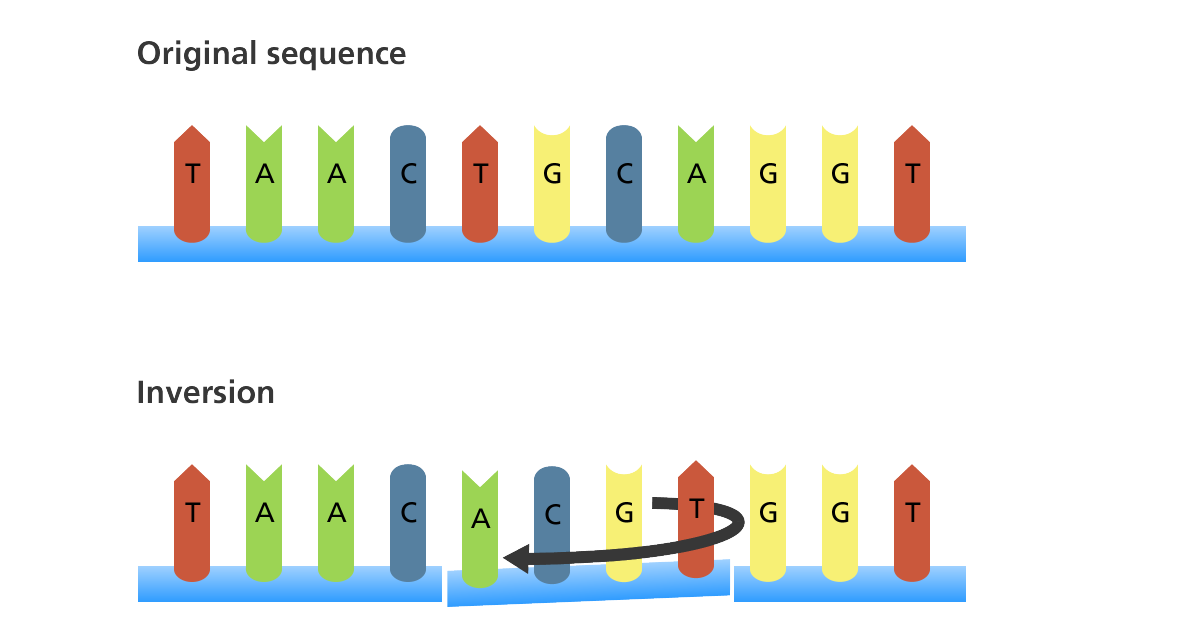
Translocation:
A translocation mutation in biology is a type of chromosomal mutation where a segment of one chromosome breaks off and attaches to a different chromosome.